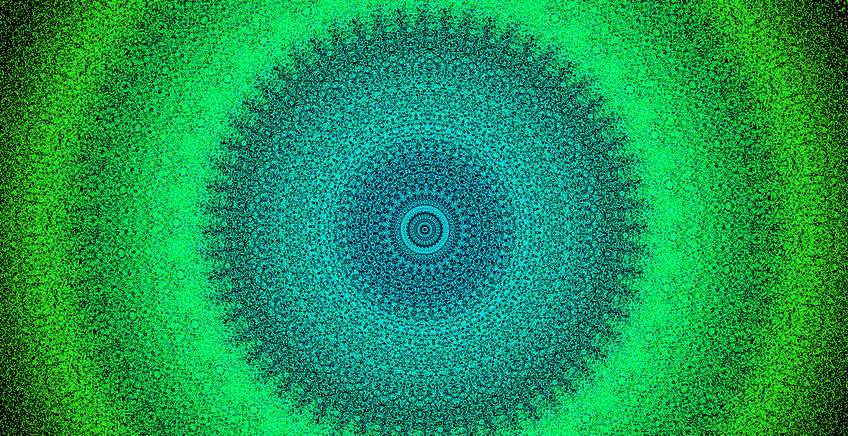
Exceptional Quantum Gravity
This ERC-funded research group seeks to develop a new symmetry based approach to the problem of reconciling quantum mechanics and Einstein’s general relativity into a consistent theory of quantum gravity unifying gravity, space-time and matter.
The vision underlying this research project is based, on the one hand, on the overwhelming success of symmetry concepts in physics — from Maxwell’s theory over Einstein’s General Relativity all the way to the modern Standard Model of Particle Physics. On the other hand, it tries to exploit evidence gathered from conceptually different approaches to the problem of quantum gravity, as well as from very recent advances in our understanding of Einstein’s theory. The fundamental hypothesis here is that space-time and matter should be described, at the most fundamental level, by a different theory that is pre-geometric and governed by new symmetry principles transcending the ones known from standard space-time based (quantum) field theory. In such a scheme, matter, space-time and geometry would be emergent concepts which are only valid at macroscopic (low energy) scales. Their emergence is thus assumed to be the result of a dynamical process involving the fundamental microscopic degrees of freedom. The basic assumption is that the symmetry that governs this process is the ‘maximally extended’ hyperbolic Kac–Moody algebra E10, a mathematical structure uniquely distinguished as a candidate symmetry for M theory, and thus quantum gravity, because it unifies the known dualities of supergravity, string and M theory, and because of accumulated evidence that it will be a key ingredient in understanding and resolving cosmological singularities. Furthermore, it has the potential to replace and supersede supersymmetry as a guiding principle for unification.
Research Highlights of the ERC Group
[1] E. Malek, H. Samtleben and H. Nicolai:
"Tachyonic Kaluza-Klein modes and the AdS swampland conjecture"
JHEP 2020(8): 159, e-print: 2005.07713[hep-th]
[2] K.A. Meissner and H. Nicolai,
"Superheavy Gravitinos and Ultra-High Energy Cosmic Rays",
JCAP09(2019)041, e-print: 1906.07262[astro-ph.HE]
[3] A. Kleinschmidt, H. Nicolai and A. Vigano,
"On spinorial representations of involutory subalgebras of Kac-Moody algebras",
In: Valery A. Gritsenko, Vyacheslav P. Spiridonov: Partition Functions and Automorphic Forms, e-print: 1811.11659[hep-th]
[4] K.A. Meissner and H. Nicolai,
"Planck Mass Charged Gravitino Dark Matter",
Phys. Rev. D100 (2019) 3,035001, e-print: 1809.01441[hep-ph]
[5] K. A. Meissner and H. Nicolai
"Standard Model Fermions and Infinite-Dimensional R-Symmetries",
Phys. Rev. Lett. 121 (2018) 9,091601, e-print:1804.09606[hep-th]
[6] L.T. Kreutzer
"Canonical analysis of E6(6)(R) invariant five dimensional (super-)gravity"
Journal of Mathematical Physics 62, 032302 (2021), e-print: 2005.13553 [hep-th]
[7] E. Malek and D. C. Thompson
"Poisson-Lie U-duality in Exceptional Field Theory"
J. High Energ. Phys. 04 (2020) 058, e-print:1911.07833 [hep-th]
[8] E. Malek and H. Samtleben
"Kaluza-Klein Spectrometry for Supergravity"
Phys. Rev. Lett. 124, 101601
[9] D. Butter, F. Ciceri and B. Sahoo
"N=4 conformal supergravity: the complete actions"
J. High Energ. Phys. 01 (2020) 029
[10] M. Henneaux, V. Lekeu and A. Leonard
"A note on the double dual graviton"
J. Phys. A 53, 1 (2019)
[11] A. Coimbra
"Higher curvature Bianchi identities, generalised geometry and L∞ algebras"
Phys. Rev. D 100, 106001
[12] E. Malek, H. Samtleben, V. V. Camell
"Supersymmetric AdS7 and AdS6 vacua and their consistent truncations with vector multiplets"
J. High Energ. Phys. 2019, 88 (2019)
[13] D. Luest, E. Malek, E. Plauschinn and M. Syvari
"Open-String Non-Associativity in an R-flux Background"
J. High Energ. Phys. 2020, 157 (2020)
[14] V. Lekeu and A. Leonard
"Prepotentials for linearized supergravity"
Class. and Quantum Gravity 36, Number 4
[15] L. Casarin, H. Godazgar and H. Nicolai
"Conformal anomaly for non-conformal scalar fields"
Phys. Lett. B, 787 94 (2018)
[16] M. Henneaux, V. Lekeu, A. Leonard, J. Matulich and S. Prohazka
"Three-dimensional conformal geometry and prepotentials for four-dimensional fermionic higher-spin fields"
J. High Energ. Phys. 2018, 156 (2018)
[17] G. Bossard, F. Ciceri, G. Inverso, A. Kleinschmidt and H. Samtleben
"E9 exceptional field theory I. The potential"
J. High Energ. Phys. 2019, 89 (2019)
[18] M. Broccoli and A. Viganò
"Electromagnetic self-force in curved spacetime: New insights from the Janis-Newman algorithm"
Phys. Rev. D 98, 084007 (2018)
[19] R. Kallosh, H. Nicolai, R. Roiban and Y. Yamada
"On quantum compatibility of counterterm deformations and duality symmetries in N ≥ 5 supergravities"
J. High Energ. Phys. 2018, 91 (2018).